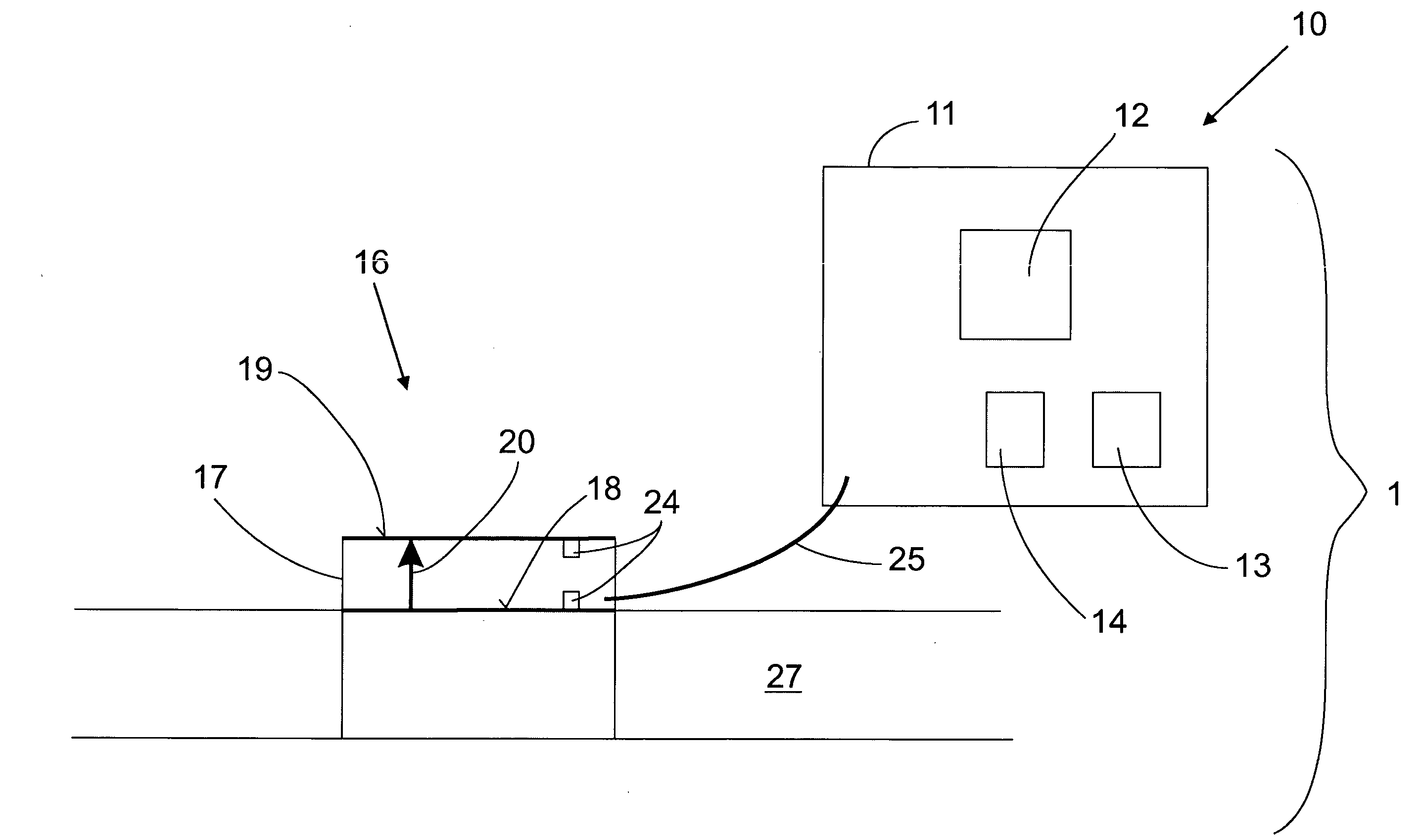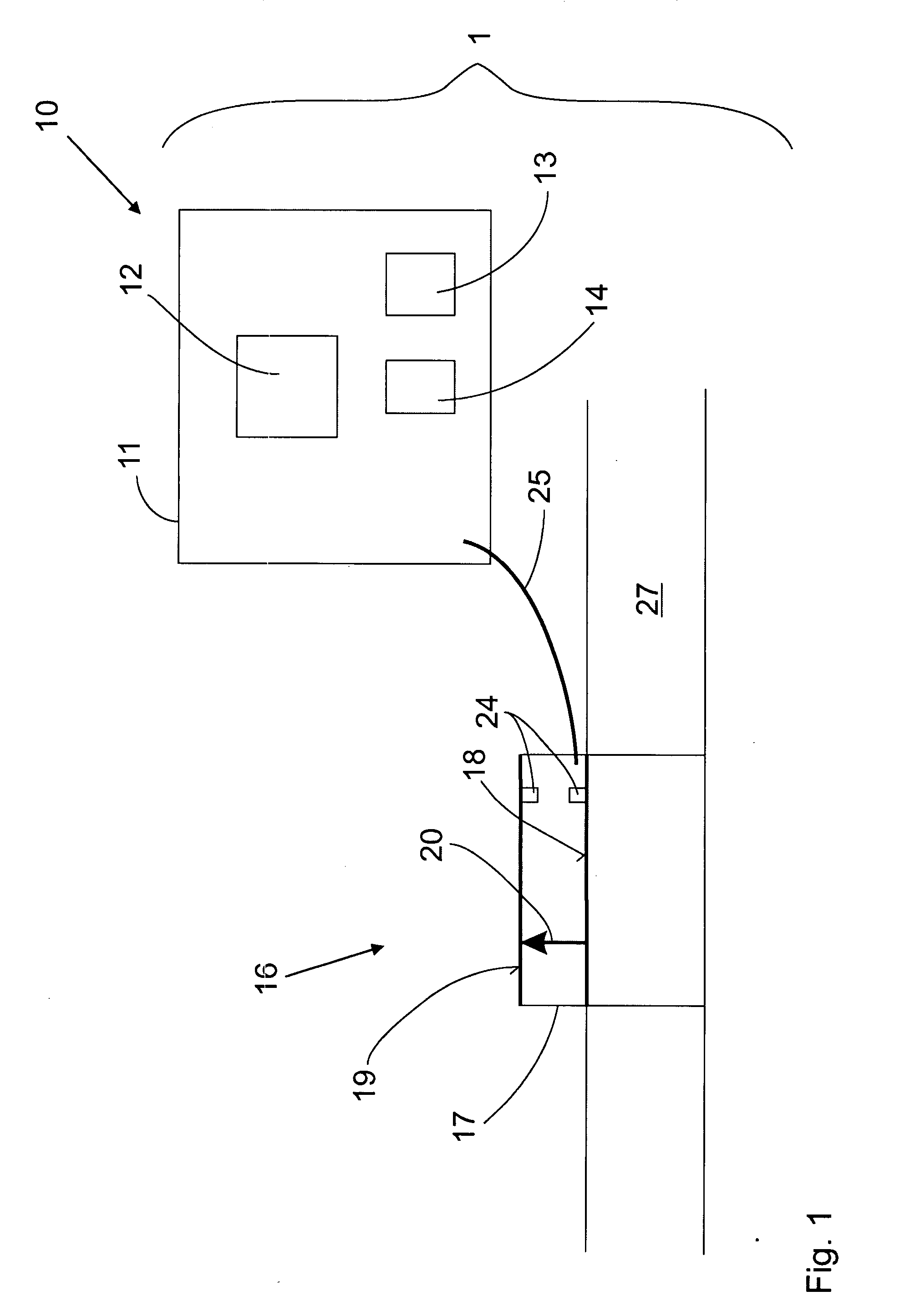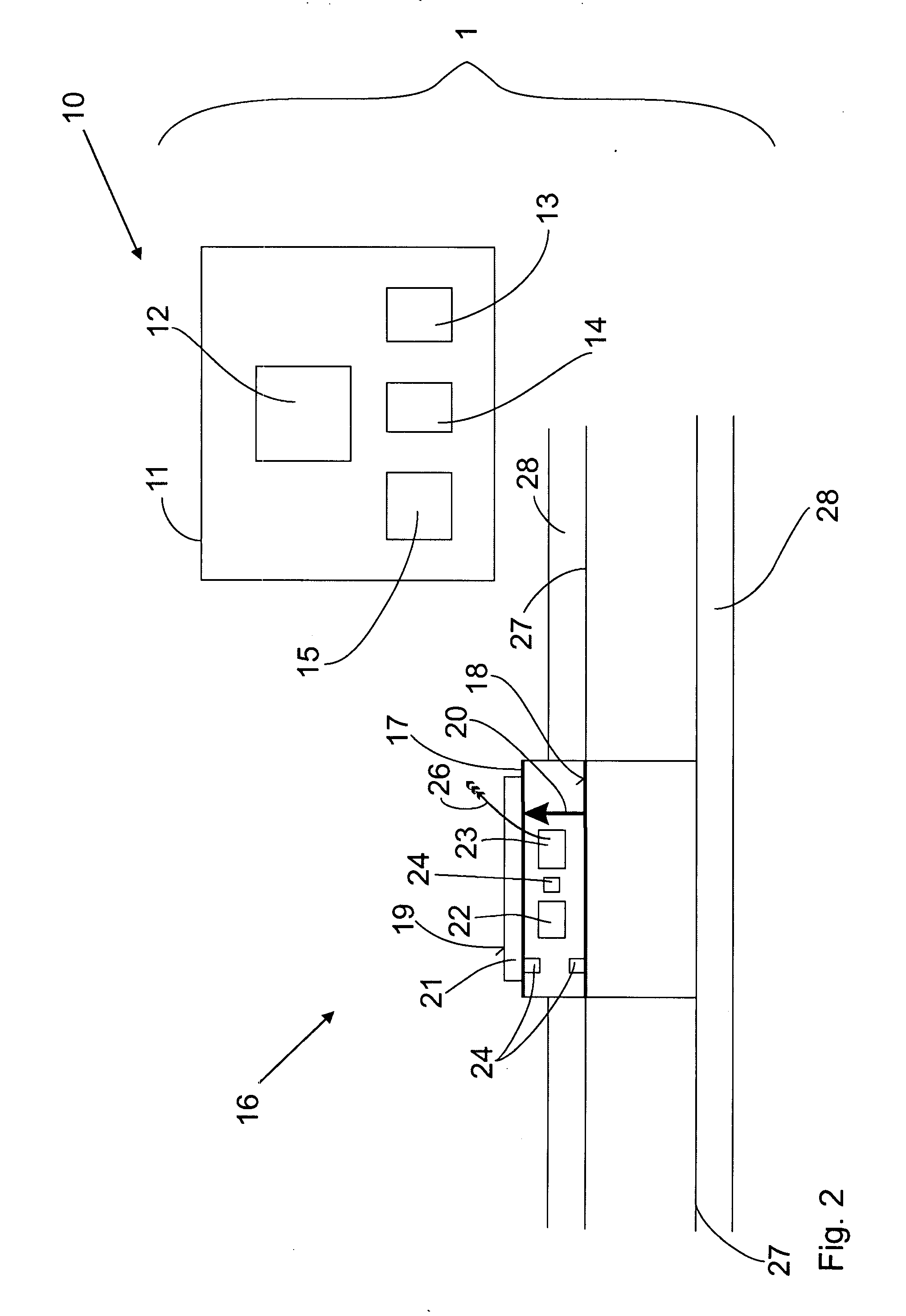Device for supplying power to field devices
a field device and thermoelectric converter technology, applied in the direction of thermoelectric devices with peltier/seeback effect, electromagnetic wave systems, electric devices, etc., can solve the problems of inability to use standardized field devices, high design complexity of the arrangement of the thermoelectric converter in this device, and the inability to reduce the heat loss of the pipeline carrying process media, so as to minimize the heat loss caused by mounting the thermoelectric converter on the pipeline, and optimize the effect of heat transfer
- Summary
- Abstract
- Description
- Claims
- Application Information
AI Technical Summary
Benefits of technology
Problems solved by technology
Method used
Image
Examples
Embodiment Construction
[0019]FIG. 1 shows an exemplary arrangement 1 for supplying power to a field device 10 having an enclosure 11 and a wireless communications interface 13 for data communications with a central data-processing device. A thermoelectric converter 16 is also provided in a separate enclosure 17 for supplying power to the field device 10. This thermoelectric converter converts an existing heat flow 20 between two points 18, 19 at different temperatures into electrical power and supplies this generated electrical power to the field device 10 via one or more electrical wires 25. The thermoelectric converter 16 is itself arranged by means of a holder on a pipeline 27 carrying process media, for example, with a converter side 18 oriented towards the process resting directly or indirectly on the pipeline 27 carrying process media. The temperature of the pipeline 27 is thereby to be transferred to the converter side 18 oriented towards the process. Thermal conduction materials can be provided fo...
PUM
 Login to View More
Login to View More Abstract
Description
Claims
Application Information
 Login to View More
Login to View More - R&D
- Intellectual Property
- Life Sciences
- Materials
- Tech Scout
- Unparalleled Data Quality
- Higher Quality Content
- 60% Fewer Hallucinations
Browse by: Latest US Patents, China's latest patents, Technical Efficacy Thesaurus, Application Domain, Technology Topic, Popular Technical Reports.
© 2025 PatSnap. All rights reserved.Legal|Privacy policy|Modern Slavery Act Transparency Statement|Sitemap|About US| Contact US: help@patsnap.com



